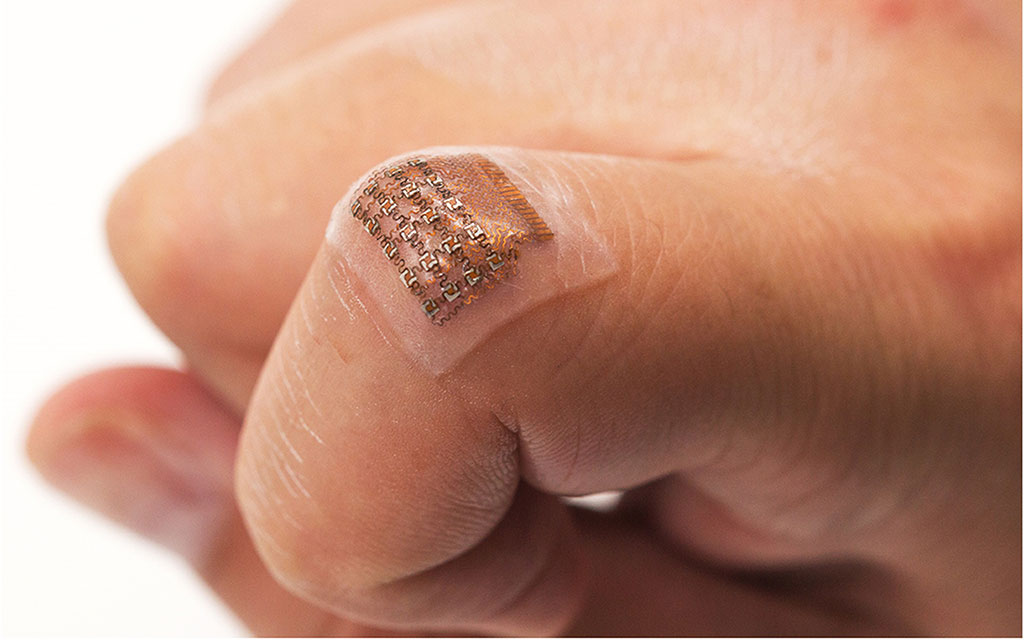Stamp-Size Wearable Ultrasound Patch Provides Cardiac Imaging on the Go
Posted on 26 Jan 2023
Central blood pressure, the pressure in the central blood vessels, sends blood directly from the heart to other vital organs in the body and is different from peripheral blood pressure that is measured using an inflatable cuff strapped around the upper arm. Medical experts believe that central blood pressure is more accurate than peripheral blood pressure and better at predicting heart disease. However, the measurement of central blood pressure is generally not done during routine exams as it requires a state-of-the-art clinical method that is invasive and involves a catheter inserted into a blood vessel in the patient’s arm, groin or neck and guided to the heart. While a non-invasive method exists, it is unable to consistently produce accurate readings. The non-invasive method involves holding a pen-like probe, called a tonometer, on the skin directly over a major blood vessel. It is important to hold the tonometer steady and at the exact right angle with the right amount of pressure each time in order to get a good reading. However, this can vary between tests and different technicians. Now, all this could change with a new wearable ultrasound patch that non-invasively monitors blood pressure in arteries deep beneath the skin to detect cardiovascular problems much earlier and with more precision.
A team of researchers, led by the University of California San Diego (La Jolla, CA, USA), has developed a new patch that uses ultrasound waves to continuously record the diameter of a pulsing blood vessel located four centimeters deep below the skin. Customized software then translates this information into a waveform. Each peak, valley and notch in the waveform, as well as its overall shape, indicates a particular activity or event in the heart. The signals offer detailed information to doctors for assessing the cardiovascular health of patients who can use it to predict heart failure or determine if there is no problem with the blood supply. Some of its applications include real-time, continuous monitoring of blood pressure changes in patients diagnosed with heart or lung disease, as well as those who are seriously ill or undergoing surgery.

The new patch uses ultrasound, which allows it to be used for non-invasively tracking other vital signs and physiological signals from places deep inside the body. The soft, stretchy ultrasound patch can be worn on the skin for obtaining precise readings of central blood pressure each time, even when the user is on the go, and can also get a good reading through fatty tissue. The researchers performed some tests in which the patch measured blood pressure as well as clinical methods. The researchers tested the patch on a male subject by making him wear it on the forearm, wrist, neck and foot when he was stationary as well as exercising. The recordings collected with the patch were found to be more consistent and precise as compared to the recordings from a commercial tonometer. The researchers also found the patch recordings to be comparable to those collected using a traditional ultrasound probe. The technology can be useful in various inpatient procedures, according to the physicians involved in the study.
“A major advance of this work is it transforms ultrasound technology into a wearable platform,” said co-first author Chonghe Wang, a nanoengineering graduate student at UC San Diego. “This is important because now we can start to do continuous, non-invasive monitoring of major blood vessels deep underneath the skin, not just in shallow tissues.”
Related Links:
University of California San Diego














